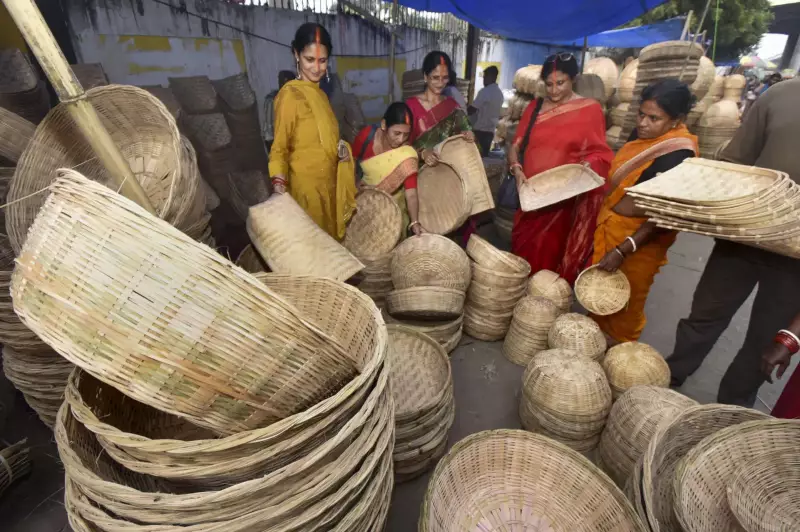
The sacred four-day Chhath Puja festival has officially commenced across India, marking the beginning of one of the most significant and ancient Hindu rituals dedicated to the Sun God. Millions of devotees, particularly in Bihar, Jharkhand, and Eastern Uttar Pradesh, have embarked on this spiritual journey with great devotion and traditional fervor.
Day One: Nahay Khay Traditions Unfold
The festival kicked off with Nahay Khay, the first day of Chhath Puja, where devotees observed sacred purification rituals. Faithful followers began their day by taking holy dips in rivers, ponds, and other water bodies before sunrise, cleansing themselves both physically and spiritually for the challenging fast ahead.
Traditional Meals and Family Preparations
Following the ritual bath, families gathered to prepare and consume traditional vegetarian meals. The highlight of the Nahay Khay feast typically includes:
- Freshly prepared kaddu-bhaat (pumpkin curry with rice)
- Traditional lentil dishes
- Seasonal vegetables cooked without onion or garlic
- Homemade chapatis and puris
This meal holds special significance as it's the last proper meal devotees will have before beginning their rigorous 36-hour fast.
The Spiritual Journey Ahead
Over the next three days, devotees will observe increasingly stringent rituals. The festival progresses through:
- Kharna (Day 2): A day of fasting broken with kheer and fruits
- Sandhya Arghya (Day 3): Evening offerings to the setting sun
- Usha Arghya (Day 4): Morning offerings to the rising sun
Community Preparations and Safety Measures
Local authorities across affected states have made extensive arrangements to ensure the safety of devotees. Ghats (riverbanks) have been cleaned and illuminated, temporary changing rooms installed, and security personnel deployed to manage the large gatherings expected in the coming days.
"The community spirit during Chhath is unparalleled. Families come together, neighbors help each other with preparations, and the entire atmosphere becomes charged with positive energy," shared a longtime Patna resident.
Cultural Significance and Environmental Awareness
This year, there's increased emphasis on celebrating Chhath Puja in an environmentally conscious manner. Many communities are promoting:
- Eco-friendly offerings made from natural materials
- Minimal use of plastic and synthetic materials
- Clean-up drives post-celebrations
- Water body conservation awareness
As the festival progresses, the air fills with devotional songs and the scent of traditional offerings, creating an atmosphere of pure devotion and cultural richness that defines this ancient Indian tradition.





